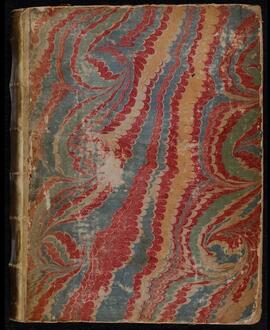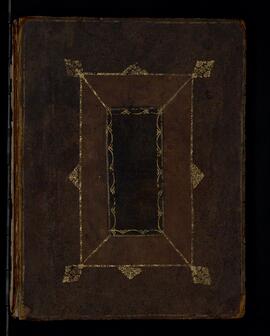The main portion of this collection consists of wills, accounts, correspondence and statements from the mid- to late nineteenth and early twentieth centuries relating to the family’s financial affairs, mostly arising from the will of the 1st Earl of Limerick and the dramatic reduction in rents at the turn of the century, which necessitated the sale of holdings through the Land Commission Court in the early 1900s. There is a small but interesting series of leases of property in Limerick City (P51/3/1/1-3 and P51/4/1-2) and a comprehensive set of documents (P51/3/2/1-28) relating to a dispute over title to St George’s Church at No. 1 Mallow Street, Limerick, which was demolished to make way to the Provincial Bank of Ireland, designed by James and George Richard Pain (for a ground plan of the bank by the Pain brothers, see P51/3/2/11).
While much of the early material relating to the Earls of Limerick and their antecedents is deposited in the National Library of Ireland, some interesting early documents can also be found in this collection. Of particular note is a compilation of manuscript transcripts of letters and petitions (P51/1/1) by Edmond Sexten the elder (1486-1555) and his grandson Edmond Sexten the younger (1595-1636) concerning among other things their disputes with Limerick Corporation. The document is written in secretary hand, but a more easily legible version can be found in P51/1/2. Also worth noting is a compilation of abstracts and copies of early deeds relating to the Sexton, Casey and Stackpole families (P51/1/3). A wonderful example of the emergence of the Age of Enlightenment can be found in P51/2/1 in the shape of a commonplace book, in which Colonel Edmund Pery kept notes between 1671 and 1681 on weights and measures, foreign coins, chronology, geography, astronomy, orthography, pronunciation and usage of English, significance of colours, instructions concerning the keep of horses, recipes for ink, boot polish etc., gardening activities and meteorological predictions.
A shortcoming of this collection is its limited scope. There are no rent rolls, no estate correspondence and no personal correspondence of family members. The building of Dromore Castle remains unrecorded, except for a scrap book (P51/5/4/1) compiled in 1868-1869 to contain sketches by the architect Edward William Godwin and rare photographs of Dromore Castle taken at various stages of its construction and a sketch of fireplace tiles by Godwin (P51/5/4/2). The only item of personal nature in the collection is an album of photographs, sketches, and signatures collected by May, Countess of Limerick during house parties (P51/6/3/2/2).
It should be noted here that the material deposited in the National Library of Ireland dates primarily from 1371 to 1806. A significant gap of the nineteenth-century material therefore exists, both in terms of estate and personal documentation.
Pery family, Earls of Limerick
